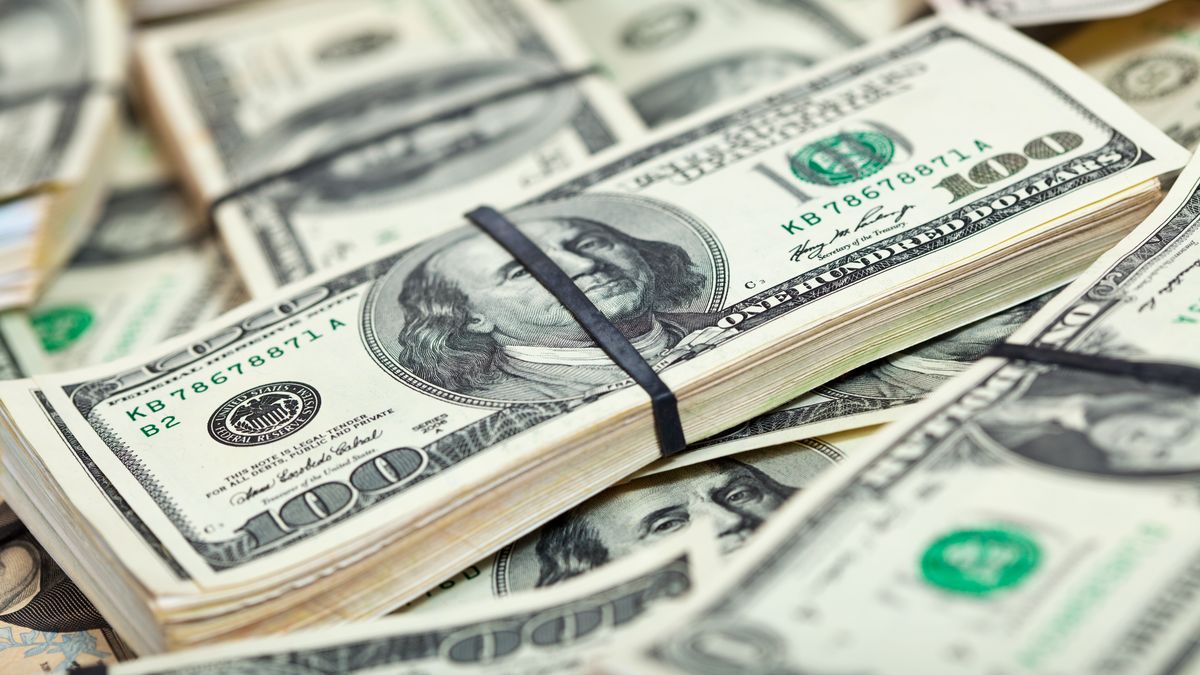The debt in pesos is key for the current government and, for this reason, Martín Guzmán reaffirmed these days that he would “never” default italluding to the unprecedented reprofiling carried out by the Mauricio Macri administration in 2019. It is that, among other things, it is the main way that the economic program foresees to meet the goal agreed with the Fund of reducing the monetary issue to 1% of the GDP this year.
“Now we are not going to run from the market,” commented sources from the economic team, in relation to the fact that the Government plans to sustain the intervention to put prices and yields back on track. How far will they try to push the CER curve? It’s not clear yet. The current level is not sustainable for the Treasury to be able to finance itself, but the sources consulted agreed that the indexed debt rate should have a positive sign in real terms.
A first sample of how much impact this cimbronazo will be seen this Tuesday in the first tender in June to be held by the Ministry of Finance, which captures the attention of the market. With few maturities this week, it will be a small placement (it will go out looking for $14,000 million expandable). But Economy will try to get part of the pesos that were left hanging around after the CER disarmament with an eye on the second tender of the month, in which it will face commitments for some $500,000 million.
For now, there will be a reduction in the issuance terms: Martín Guzmán’s team offers this time fixed-rate bills with a duration of two months and indexed bills with a term of four months. The focus of attention will be on the yields that validate Financebut it is discounted that there will be a rise with respect to previous operations.
The next step will come on Thursday. On that day, the BCRA board will define a new rate hike as a reaction signal to the latest market movements, according to what this newspaper learned. So far this year, the 28-day Leliq rate, the reference for the entire financial system, has risen five times: it went from 38% annual nominal rate to the current 49%, which in effective terms represents a yield of 61.77 %. The agreement with the IMF sets out the commitment to move towards positive real rates.
The new level will be defined, on the one hand, based on the inflation data for May that the Indec will report on Tuesday (it is expected to be around 5%) and, on the other, based on what happens with the tender for Finance. It is that the Central and Economy calibrate the movements so that the rate offered by the Treasury is always higher than the monetary policy rate, with the aim of stimulating banks and other investors to finance the treasury. Pesce, in fact, had been fighting for a slightly higher increase in public debt yields, while Guzmán was seeking more limited increases.
dollar-savings-investments-finance
pixabay
Dollar
The dollar blue confirmed its upward trend and closed at 216 pesos, in a week that began under the same tone of uncertainty and tension with which it had closed last Friday.
The day was crossed by all kinds of versions and rumours. During the morning, President Alberto Fernández received the Minister of Economy, Martín Guzmán, at Quinta de Olivos, where they analyzed the scenario, with a focus on tomorrow’s tender and the announcement of May’s inflation, which analysts place by above 5%.
Guzmán tried to convey calm by arguing that he will be able to obtain the funds he needs in the local capital market and that the inflation rate, although still high, shows a downward trend.
On the day before a decisive tender in pesos, investors chose to continue disarming positions in local currency and take refuge in the dollar for fear that the Government will not be able to obtain the necessary funds to refinance the maturities that it must face.
These changes caused a rise in the US currency in all its ranges.
The blue registered a jump of $6 (2.86%) to close at $216, the highest value in the last four months and thus registering an advance of $9 so far in June.
The financial dollars had an even greater increase. The cash with liquidation had an advance of 4.58% and climbed to $238.03, while the MEP increased 3.49% and reached $230.99.
The versions with government intervention were calmer. The official dollar rose just 0.39% to $127.60, leaving the “solidarity” or “savings” at $210.54.
For its part, the wholesale dollar was quoted at $122.30, with an increase of 0.42%, with which the gap with the blue is of the order of 77%.
For its operation in the foreign exchange market, the Central Bank acquired US$ 25 million, according to market sources. The accumulation of reserves is another key data that economic analysts and investors follow to define the fate of the government’s economic program.
bonuses
Bonds in dollars closed the day with falls of US$1 on average throughout the curve, while titles in pesos adjusted by CER showed mixed results, with purchases in the short section and falls of up to 2.5% in the long section of the curve.
Market specialists consulted by Télam pointed out that the bonds adjusted by the CER index “are already beginning to glimpse a stabilization”, after the massive sales of last week.
In this framework, the country risk increased 3.4% to 2,113 basic points.
Economy Minister Martín Guzmán rejected the possibility of a default on the debt in pesos, stating that the government “would never do that.”
Coming out of an article in the newspaper Clarín, the head of the Palacio de Hacienda said that “our government would never do that.”
Through his account on the social network Twitter, Guzmán emphasized that “credit in one’s own currency is a pillar of every sovereign state.”
In the variable income segment, the Buenos Aires stock market fell 1.35%, in line with the drop shown by the reference markets, while the shares of Argentine companies in New York fell to 12.1%.
In the local market, the losses were headed by Transportadora de Gas del Norte (-8.22%); Cablevision (-5.38%); Supervielle Group (-3.34%); BYMA (-3.10%); and Cresud (-3.04%).
Meanwhile, the increases were recorded by Sociedad Comercial del Plata (2.86%); Telecom Argentina (2.74%); Pampa Energy (1.03%); Central Puerto (0.85%) and Grupo Financiero Valores (0.40%).
In New York, the papers of Argentine companies ended the session with results in the red, among which Despegar (-12.1%) stood out; Supervielle Bank (-10.6%); Free Market (-9.4%); Cresud (-9.1%); and Grupo Financiero Galicia (-7.9%).
Source: Ambito
David William is a talented author who has made a name for himself in the world of writing. He is a professional author who writes on a wide range of topics, from general interest to opinion news. David is currently working as a writer at 24 hours worlds where he brings his unique perspective and in-depth research to his articles, making them both informative and engaging.




